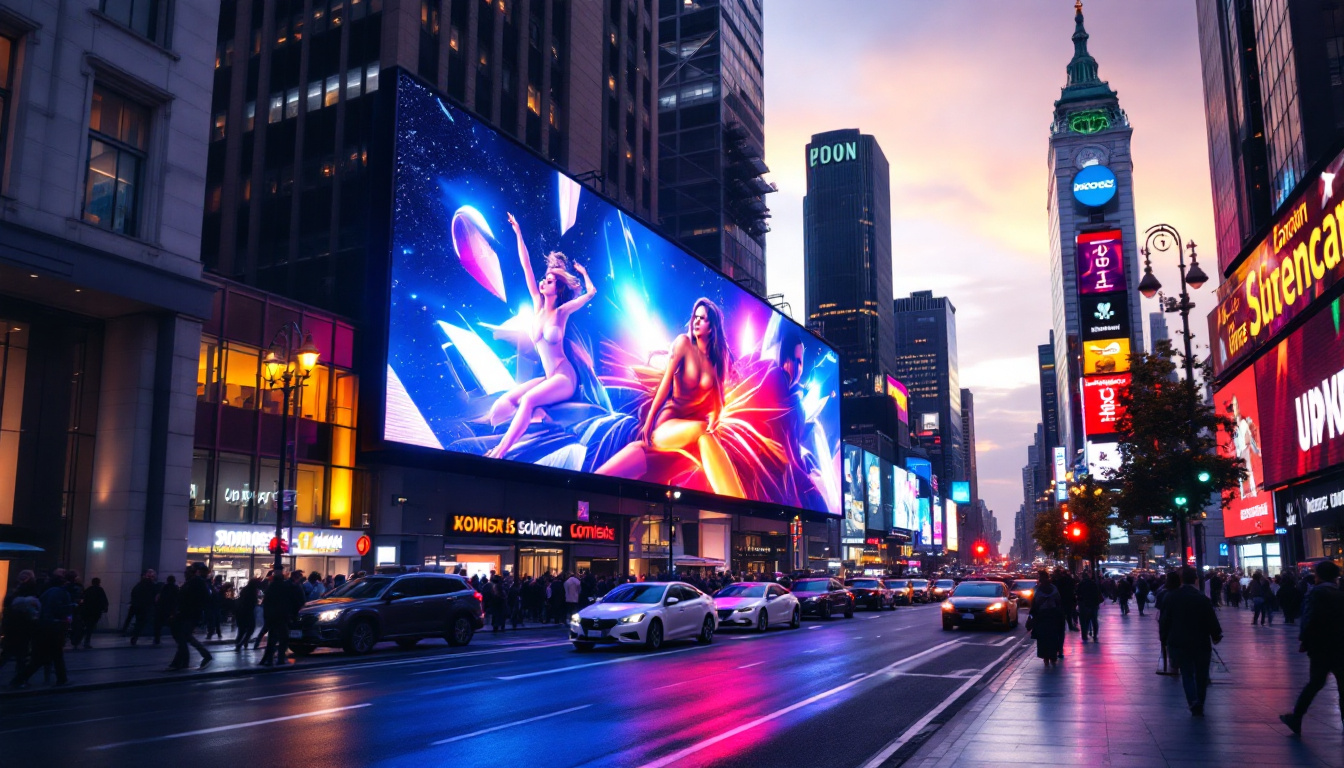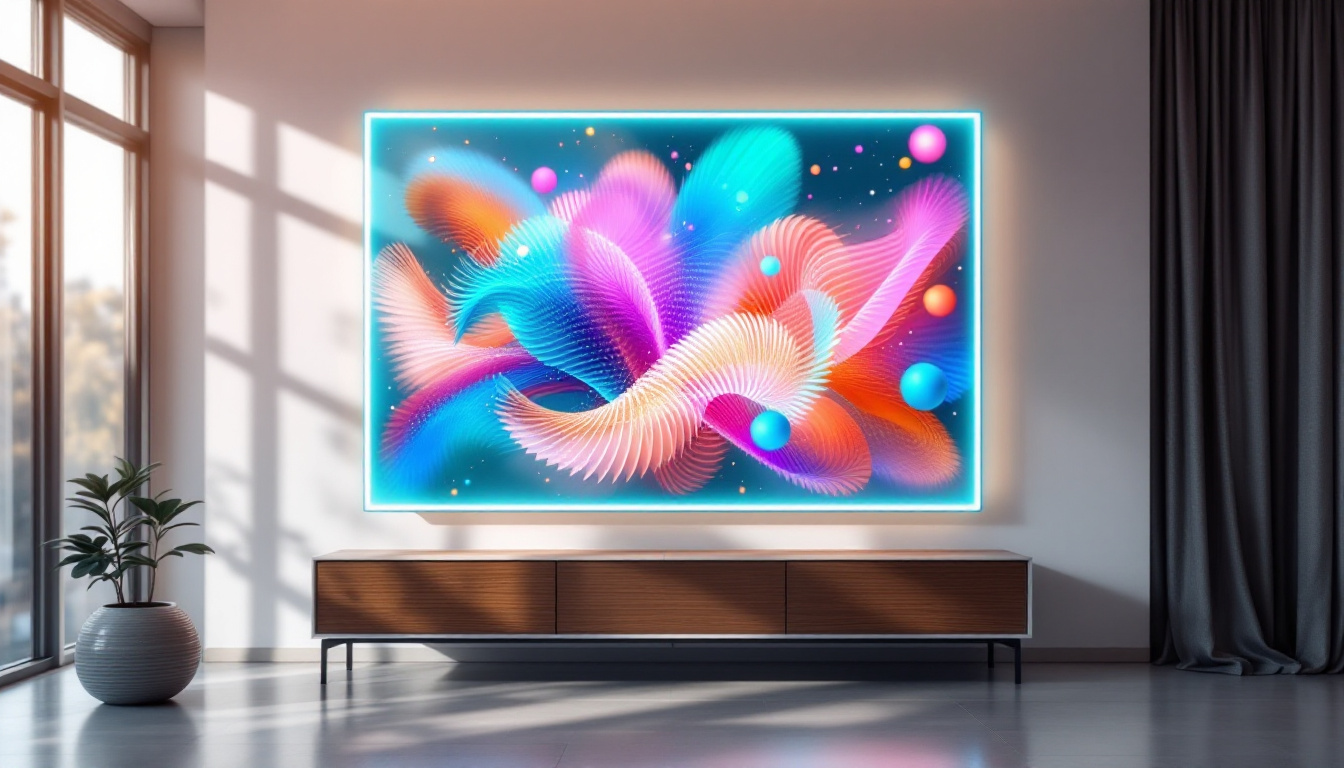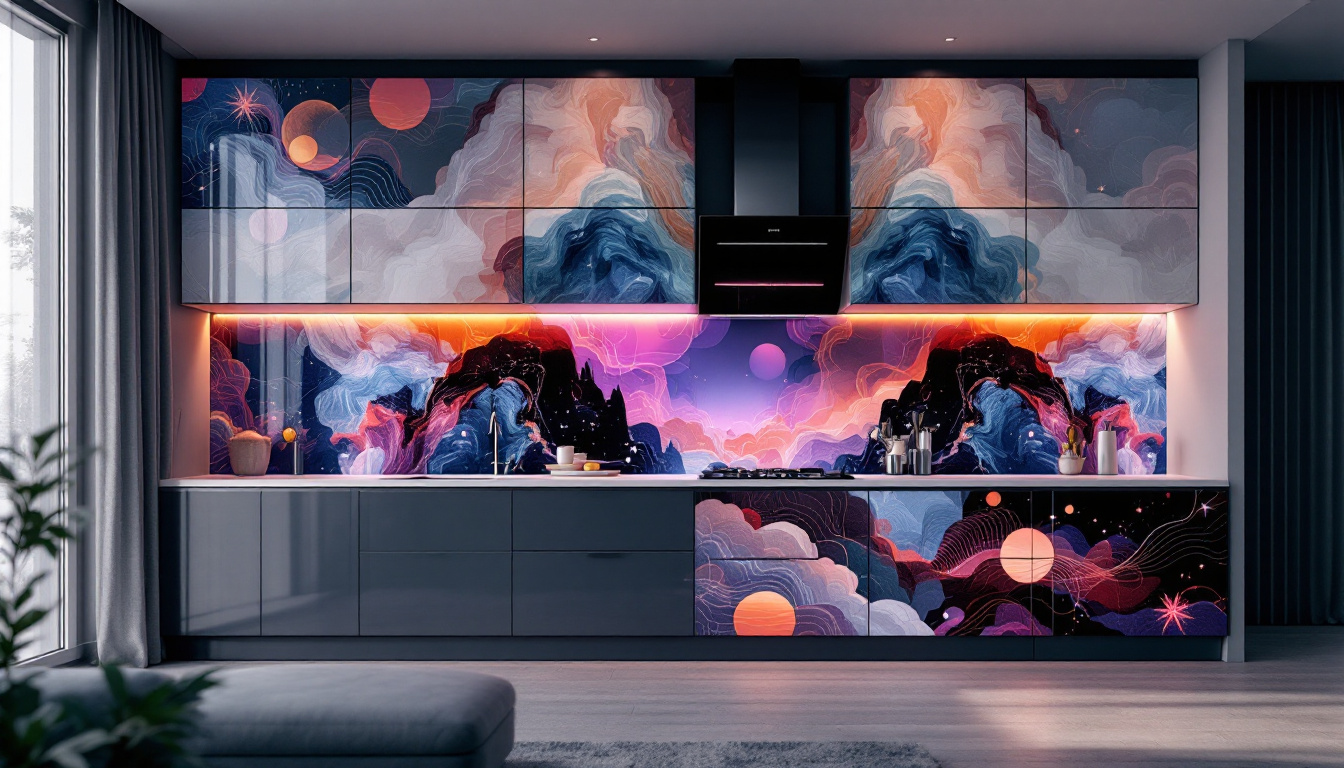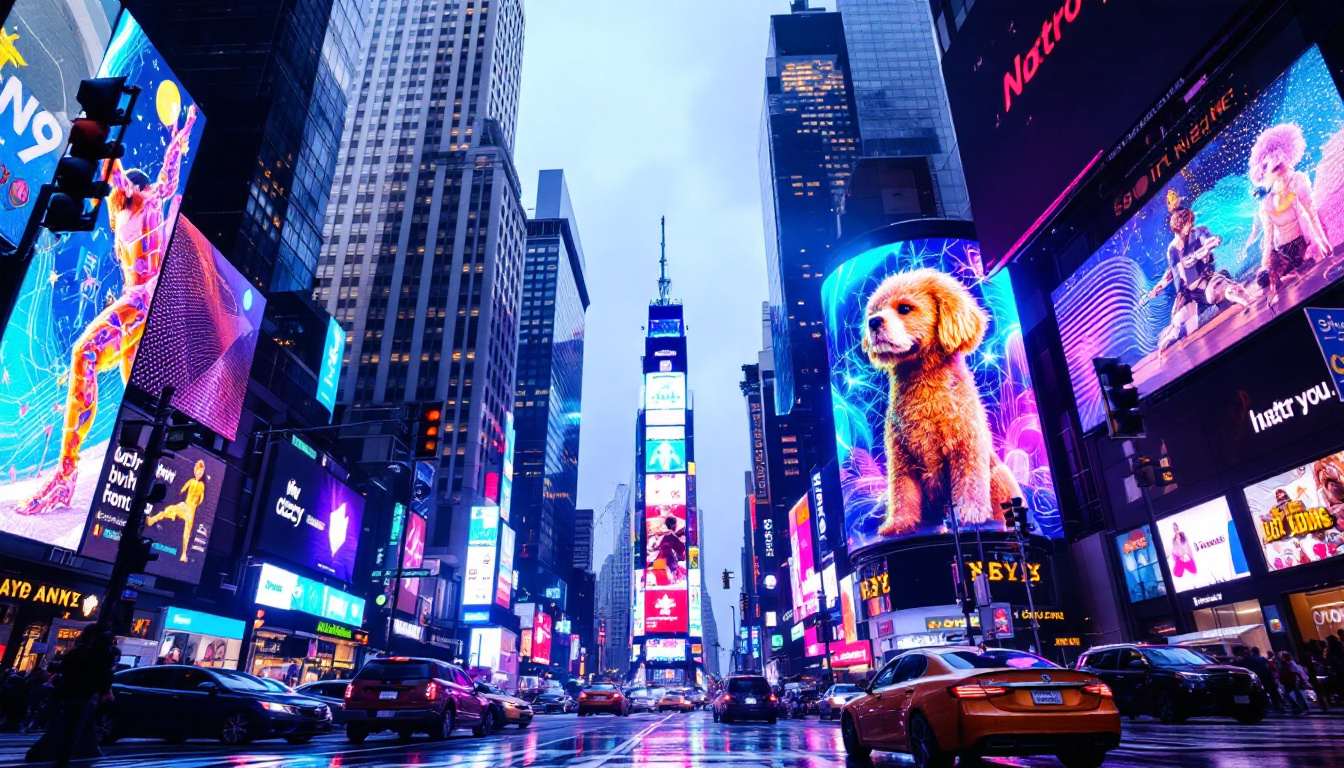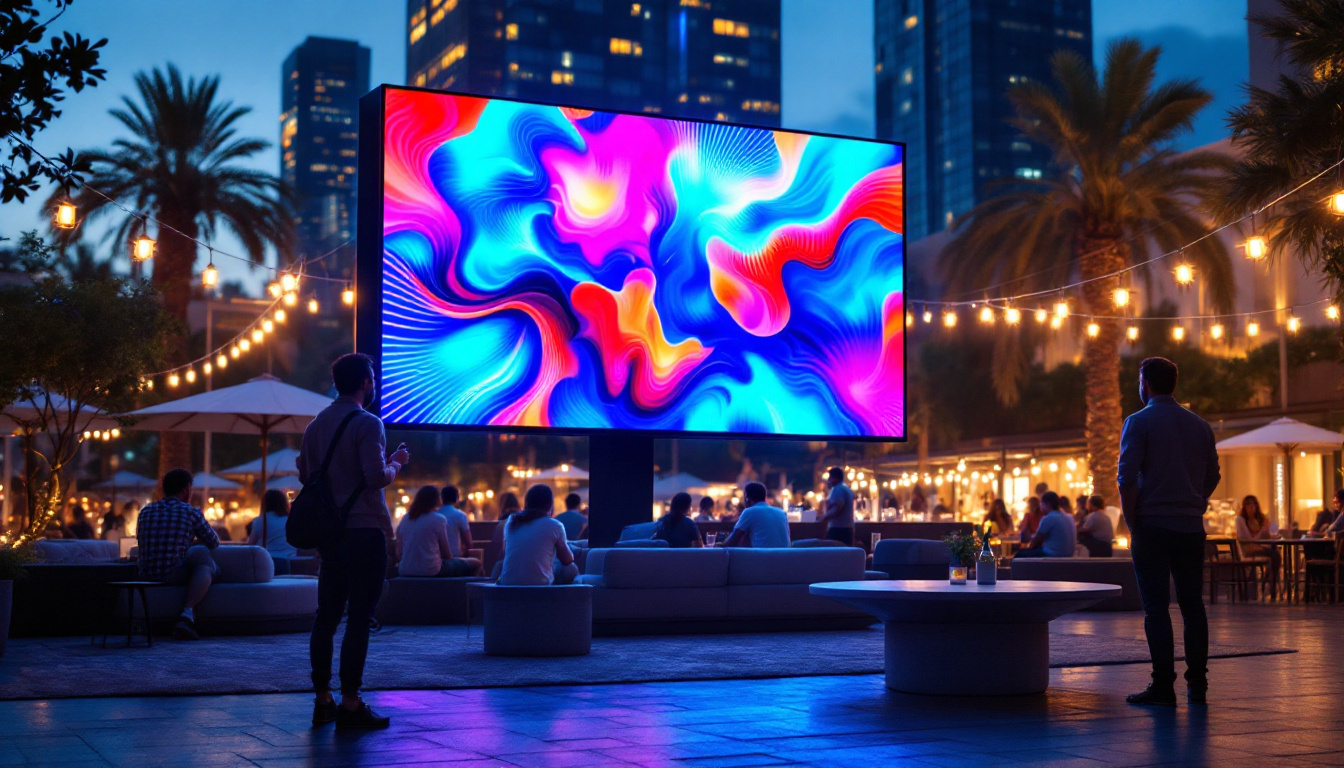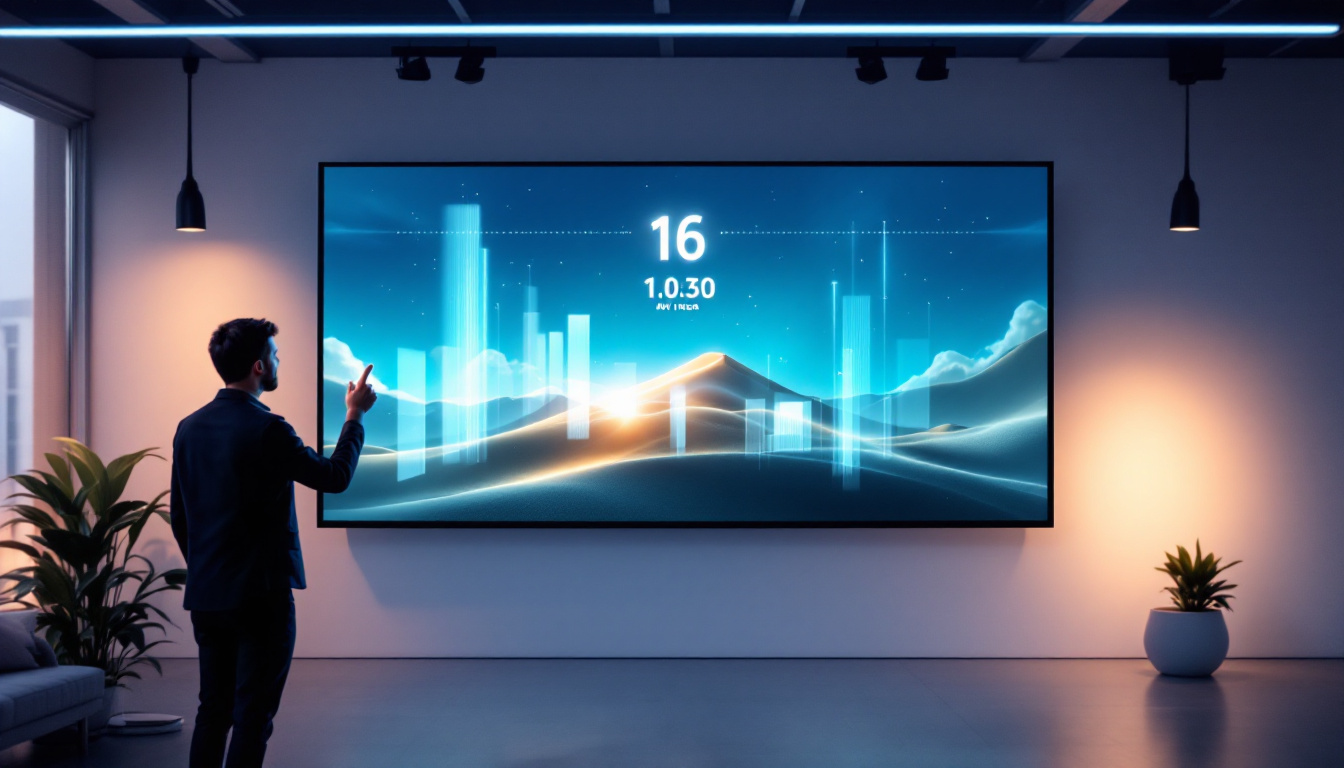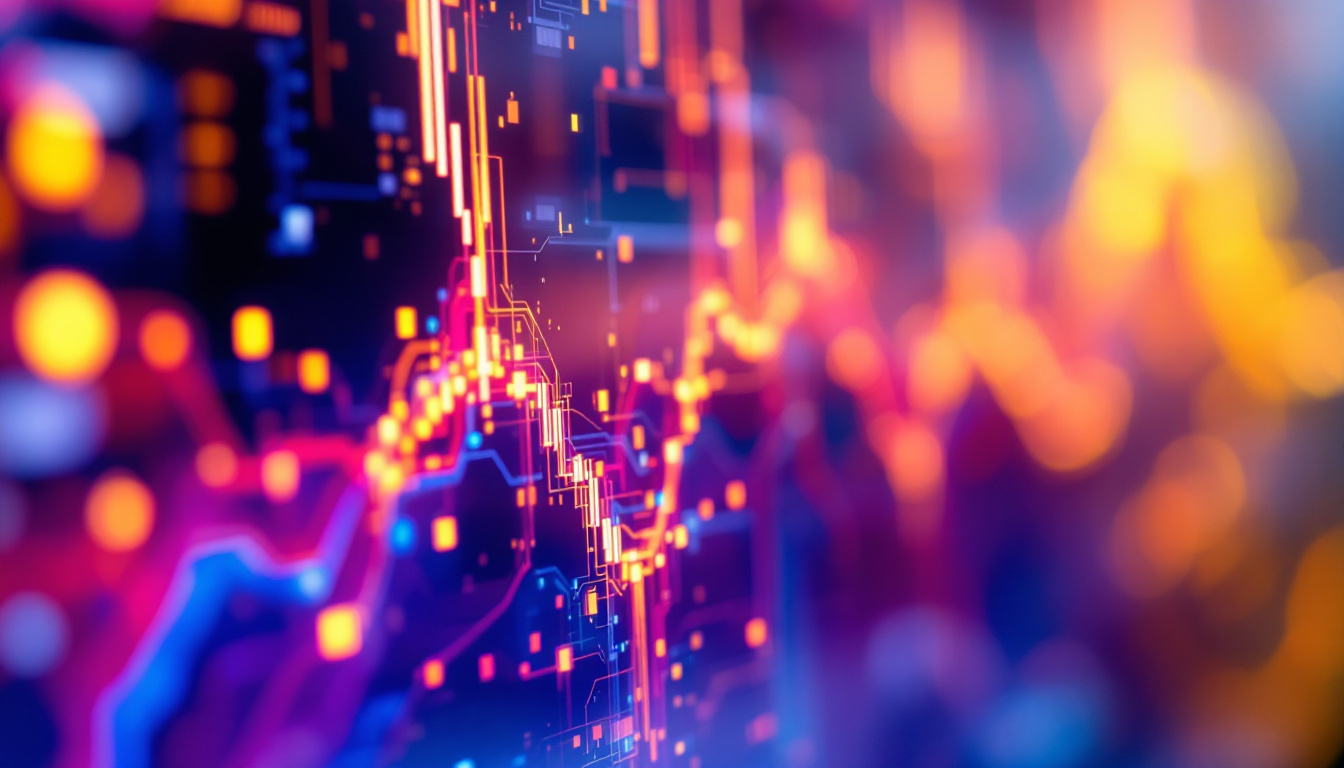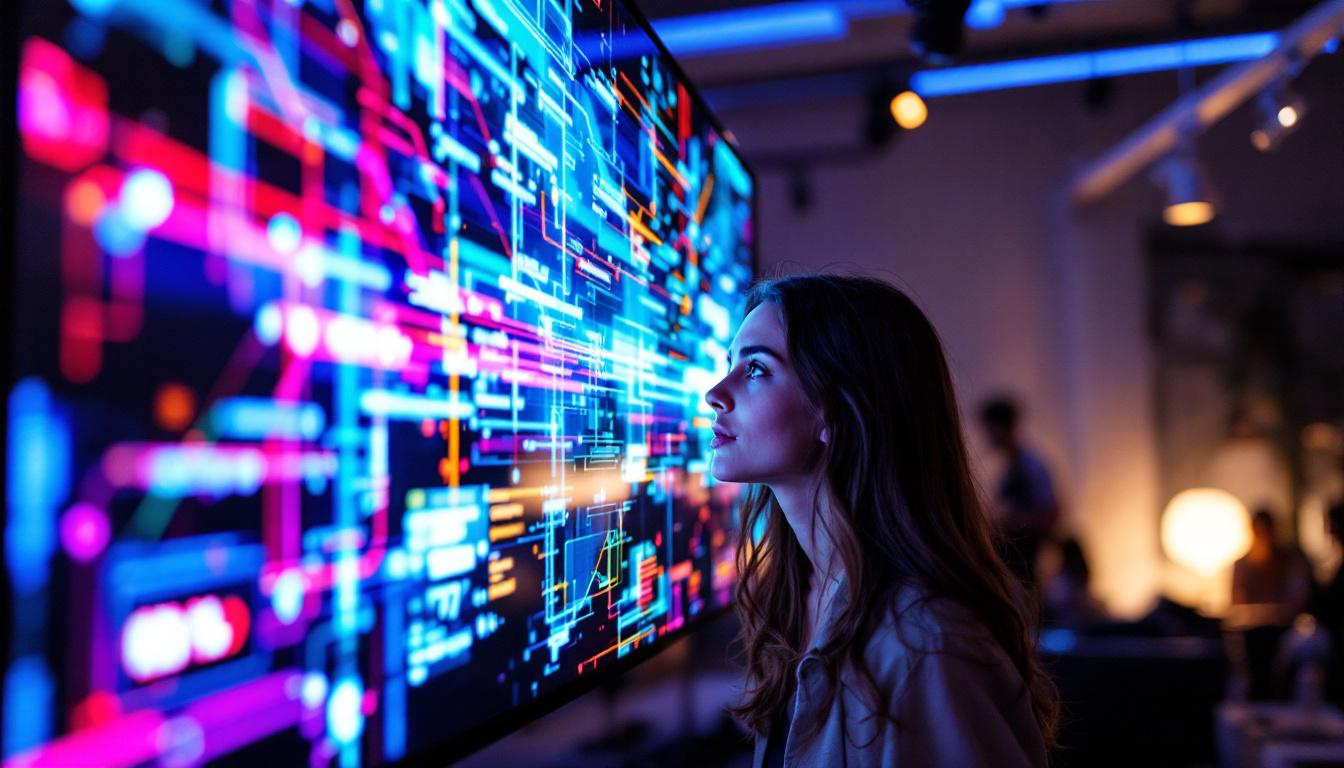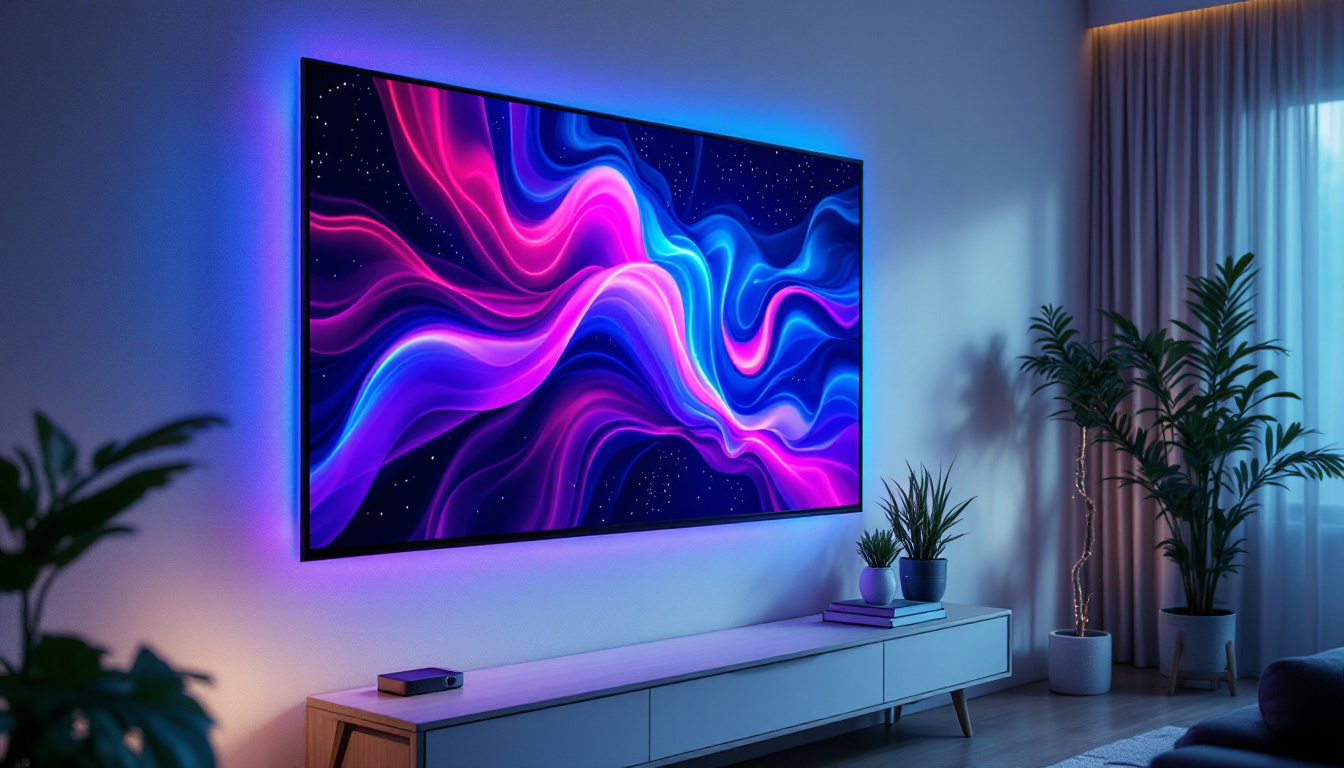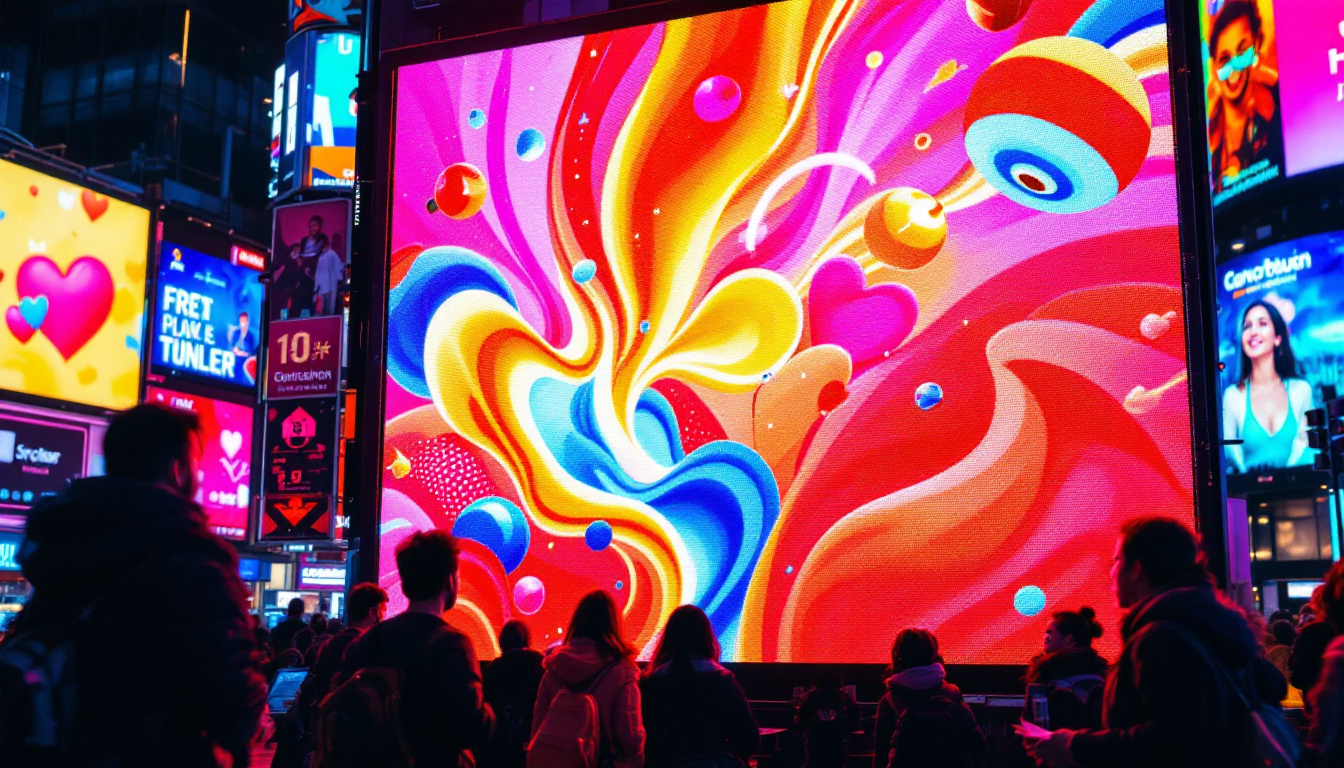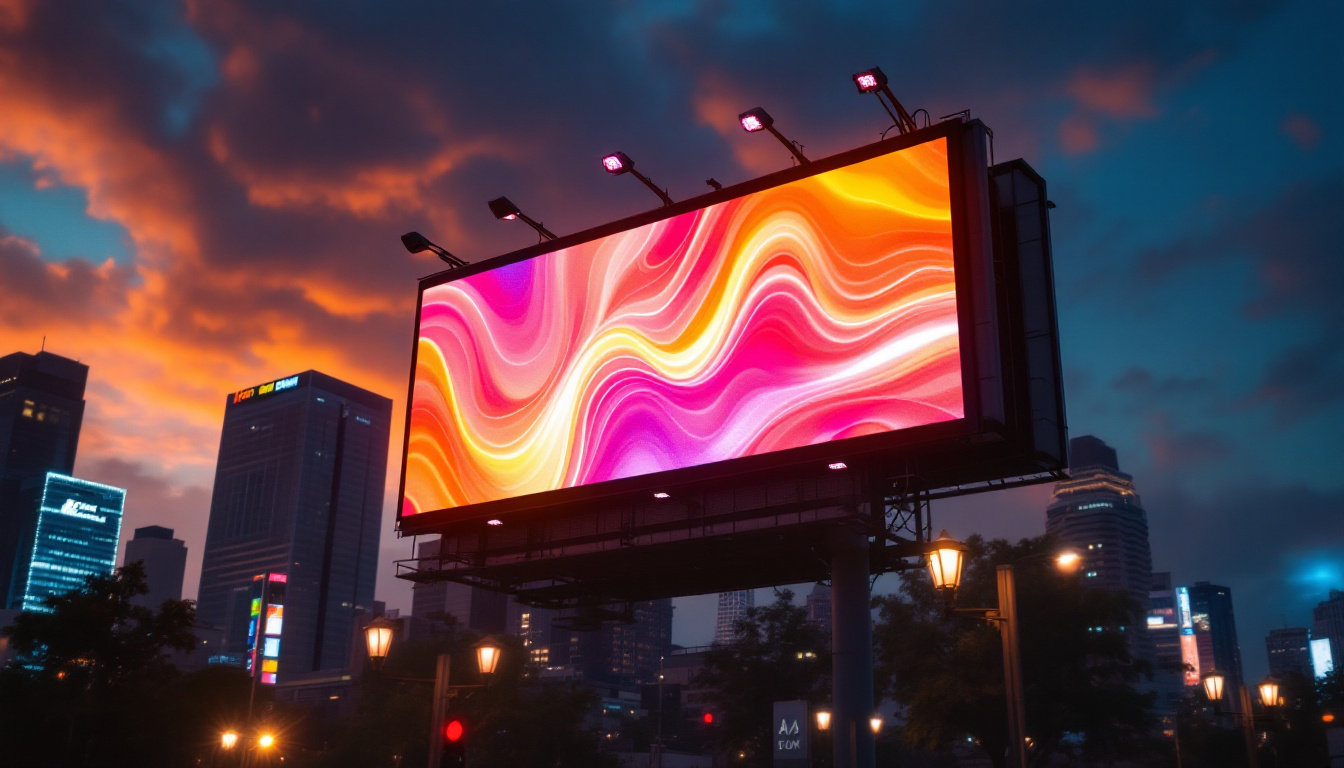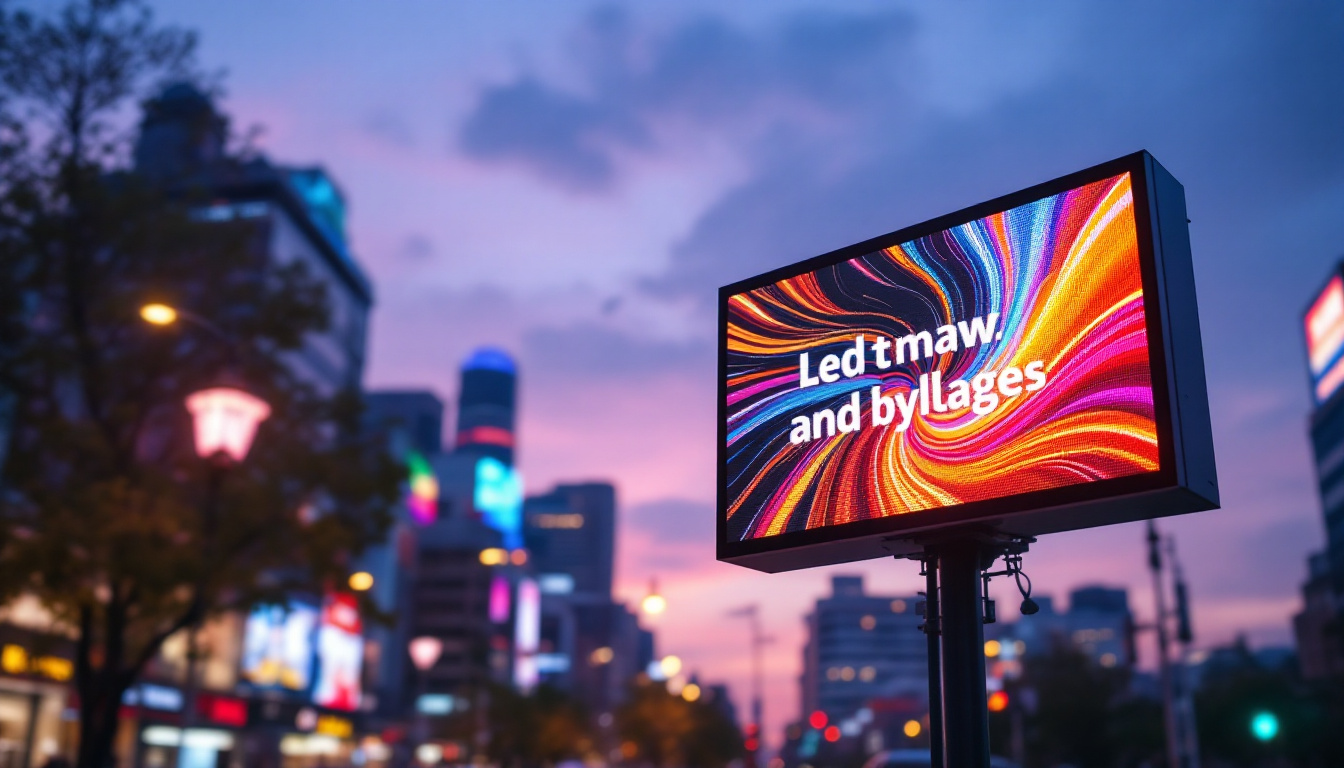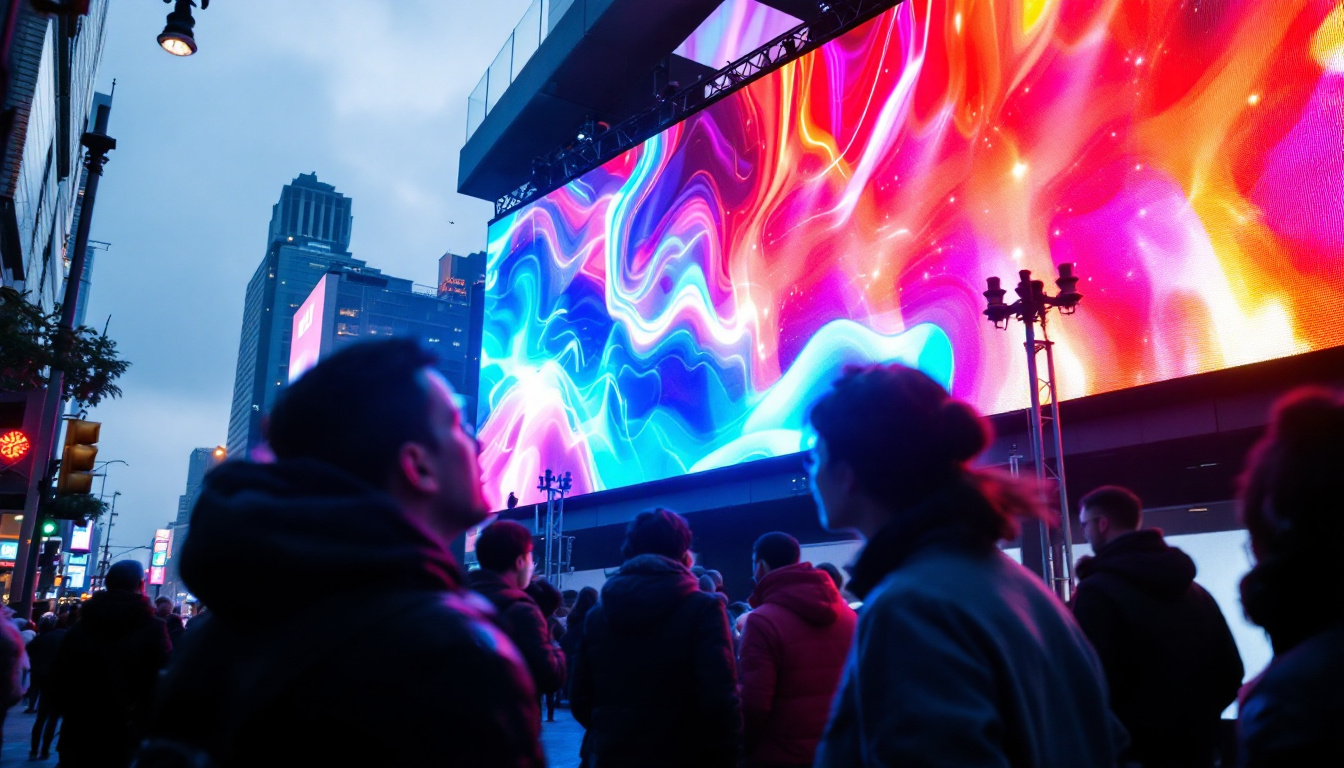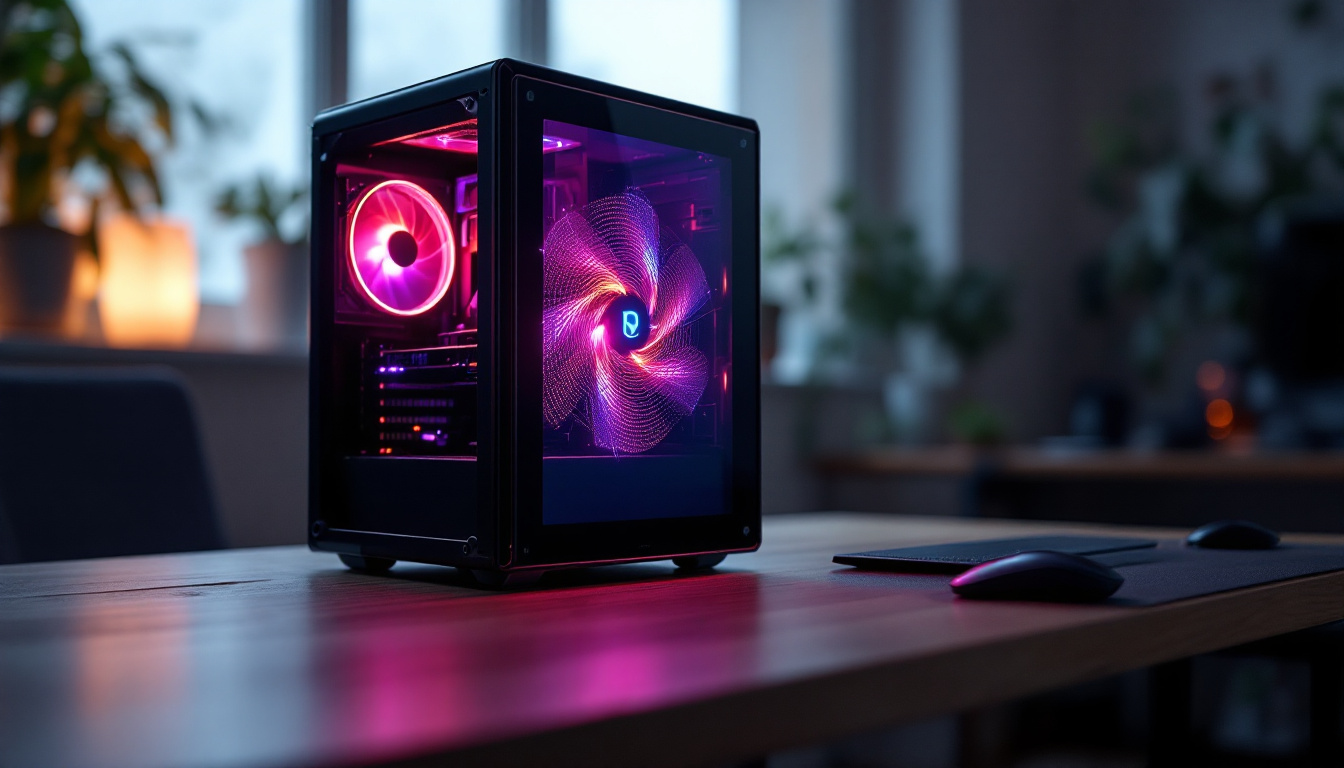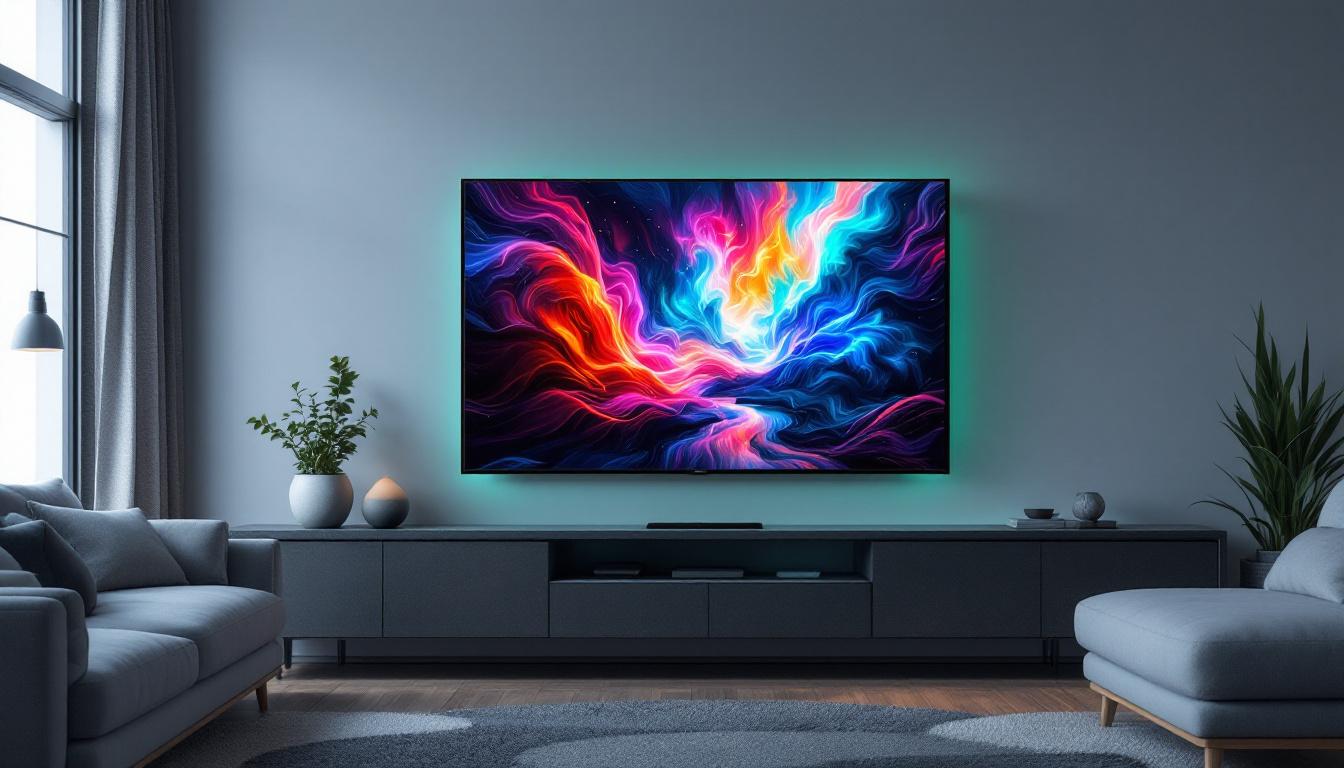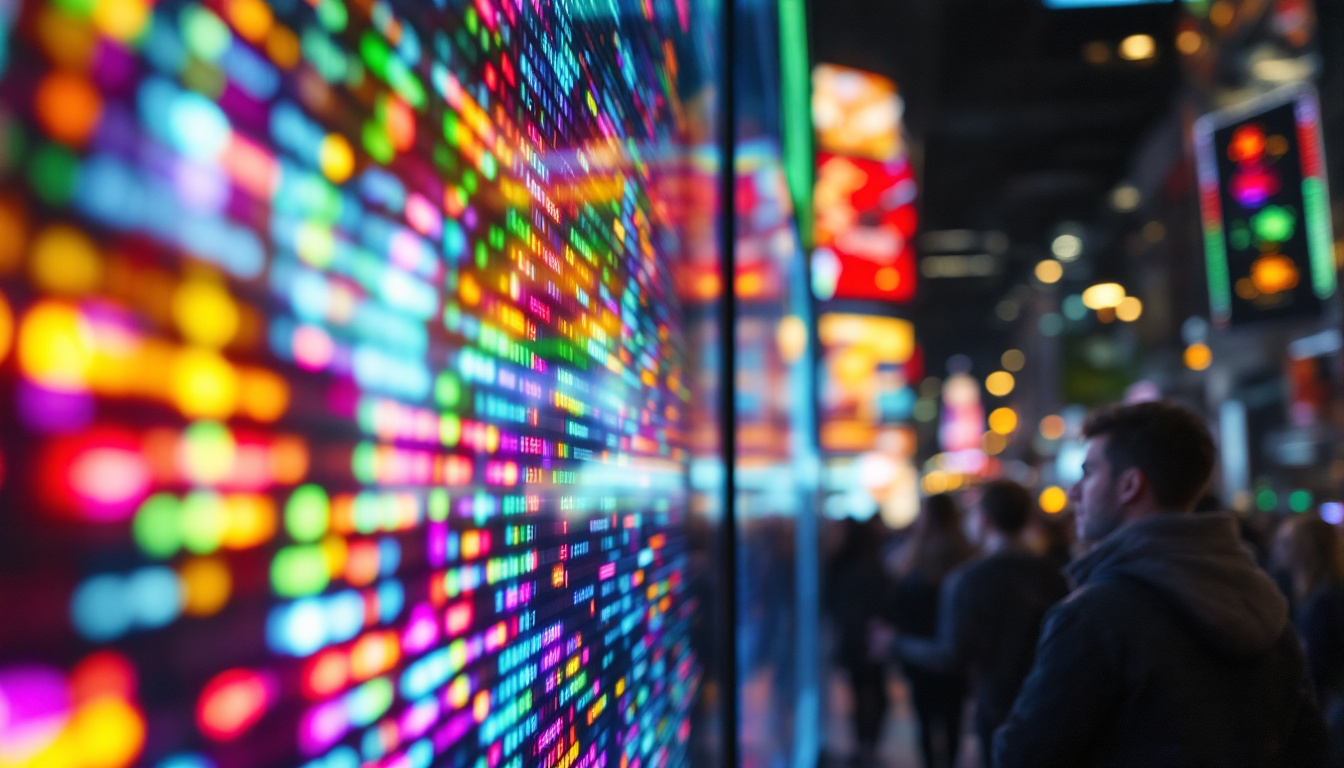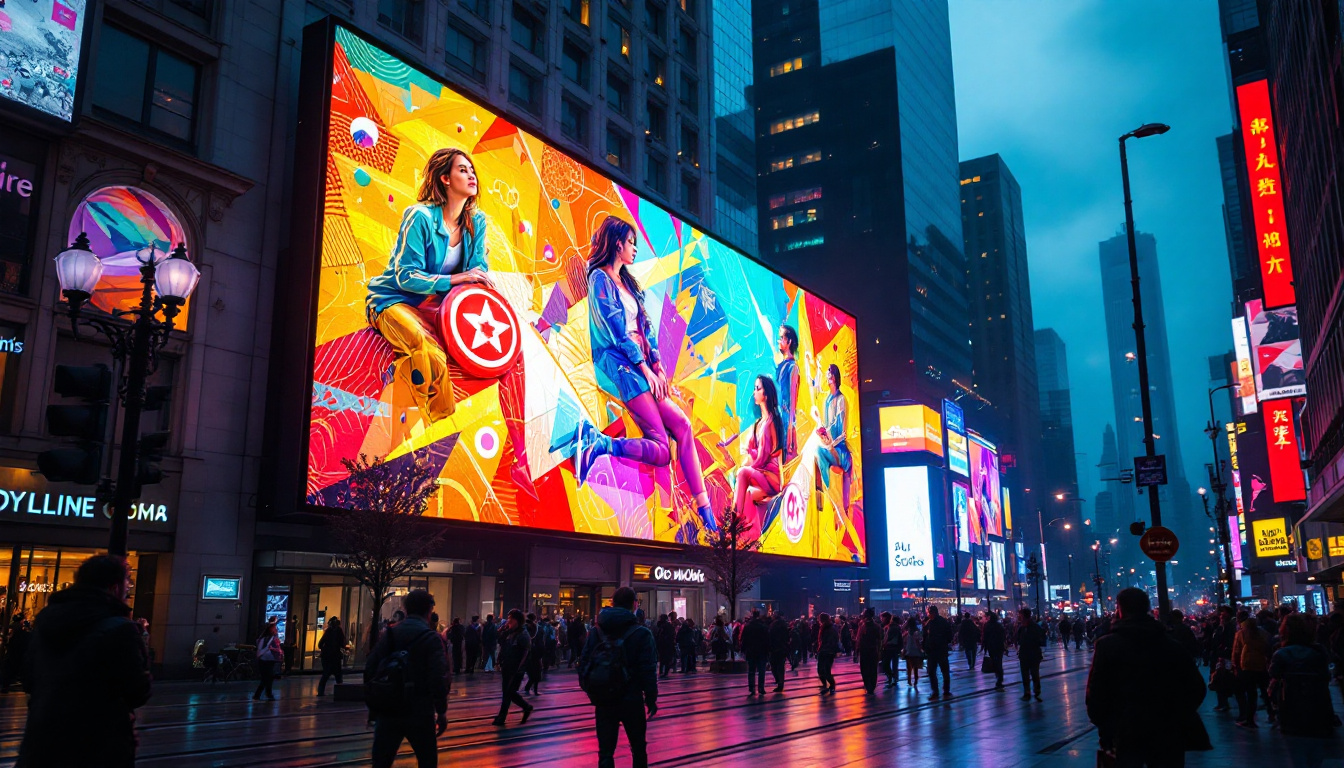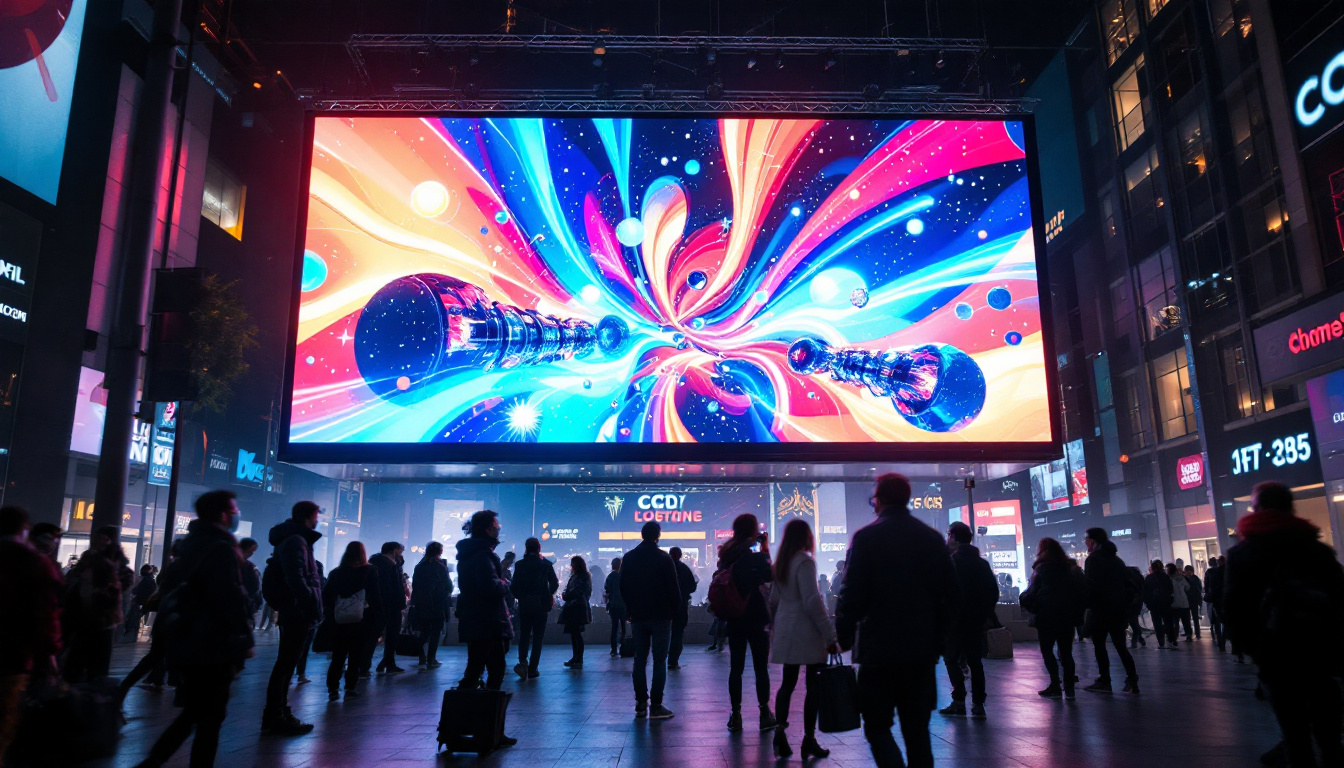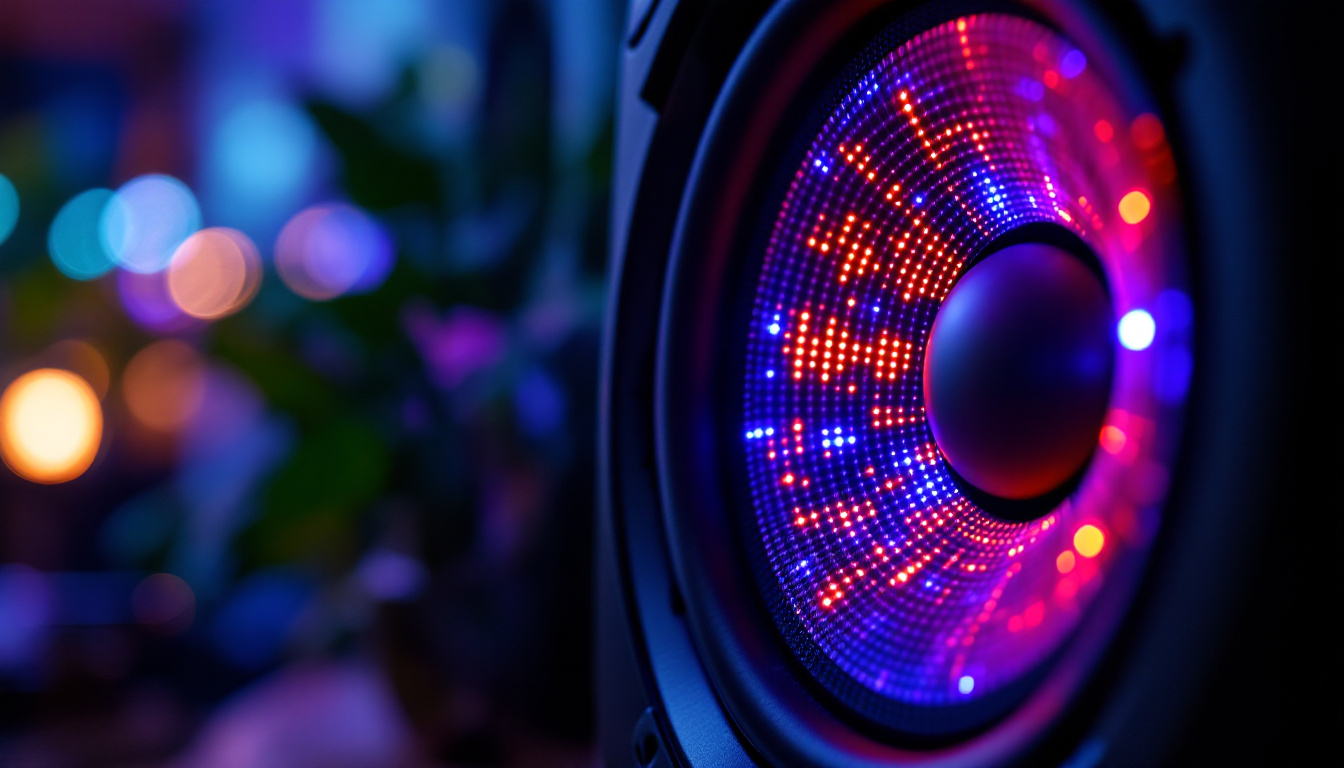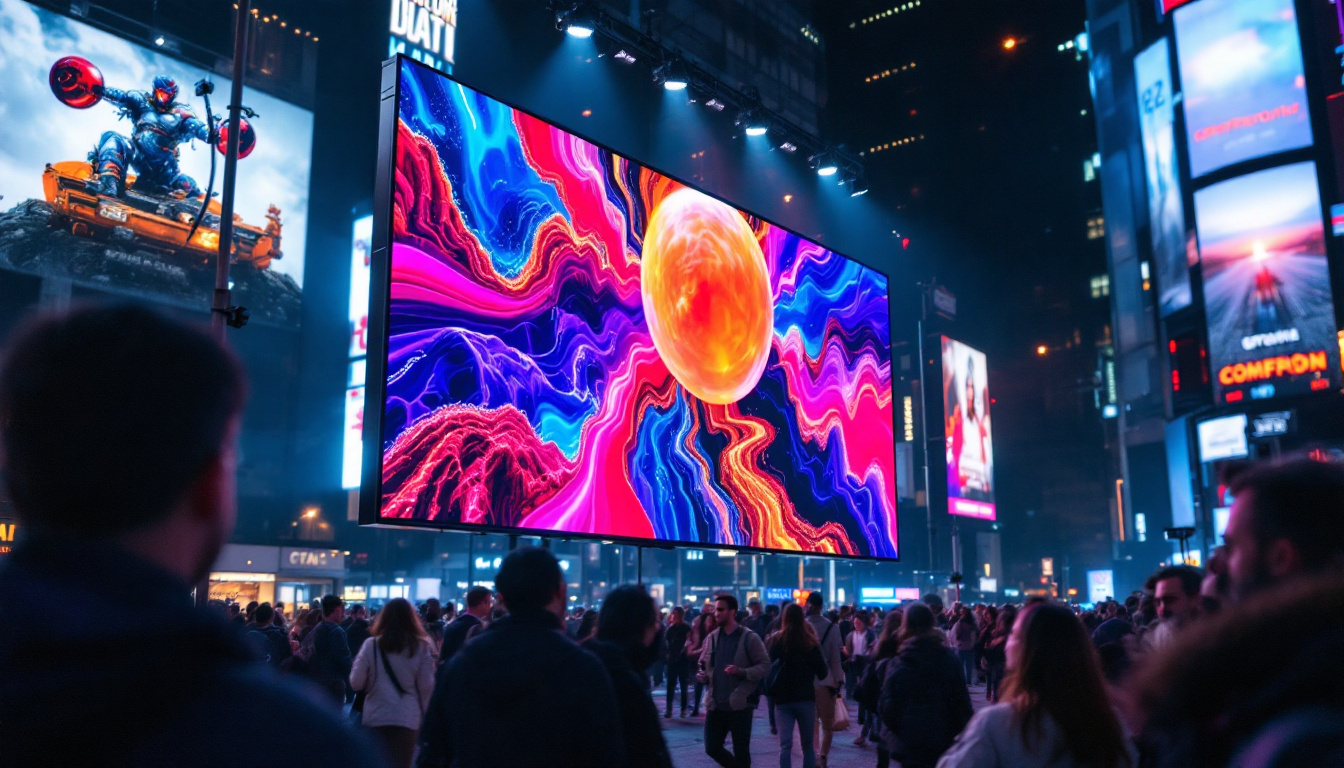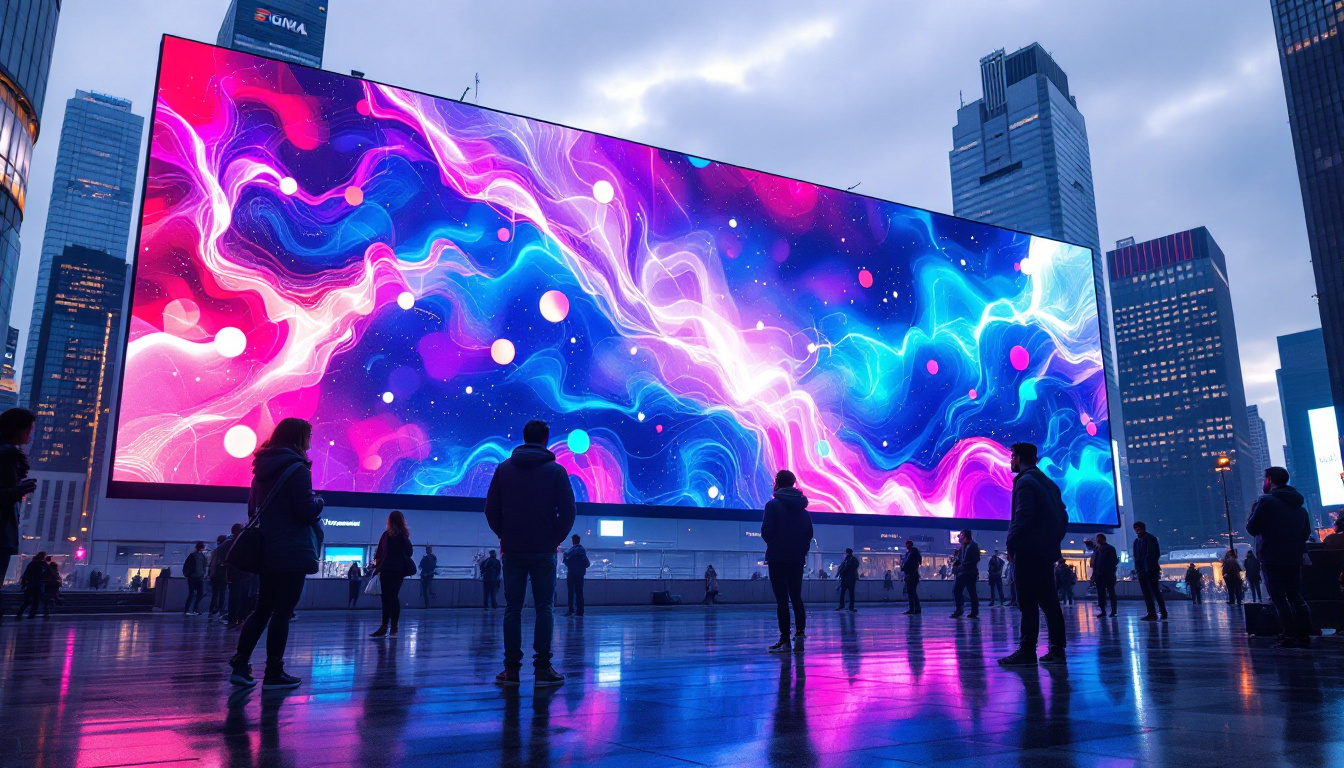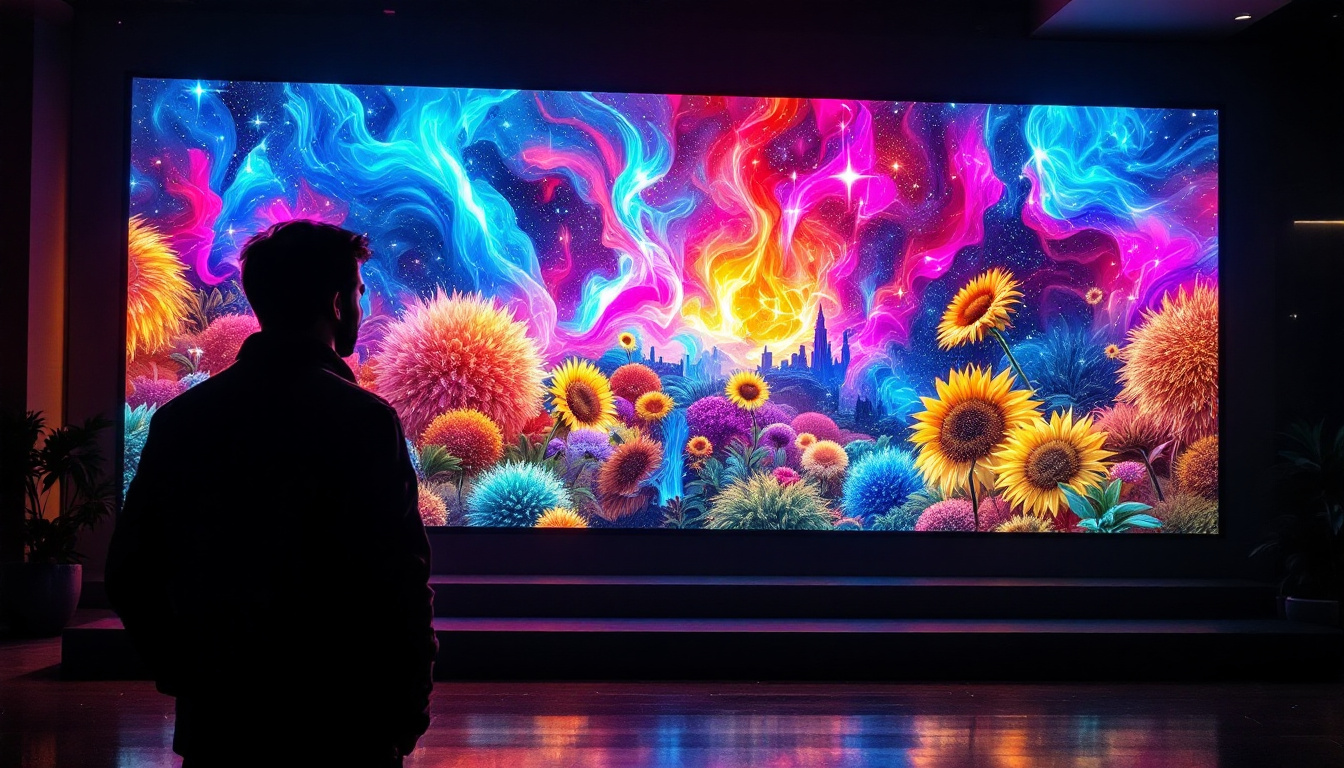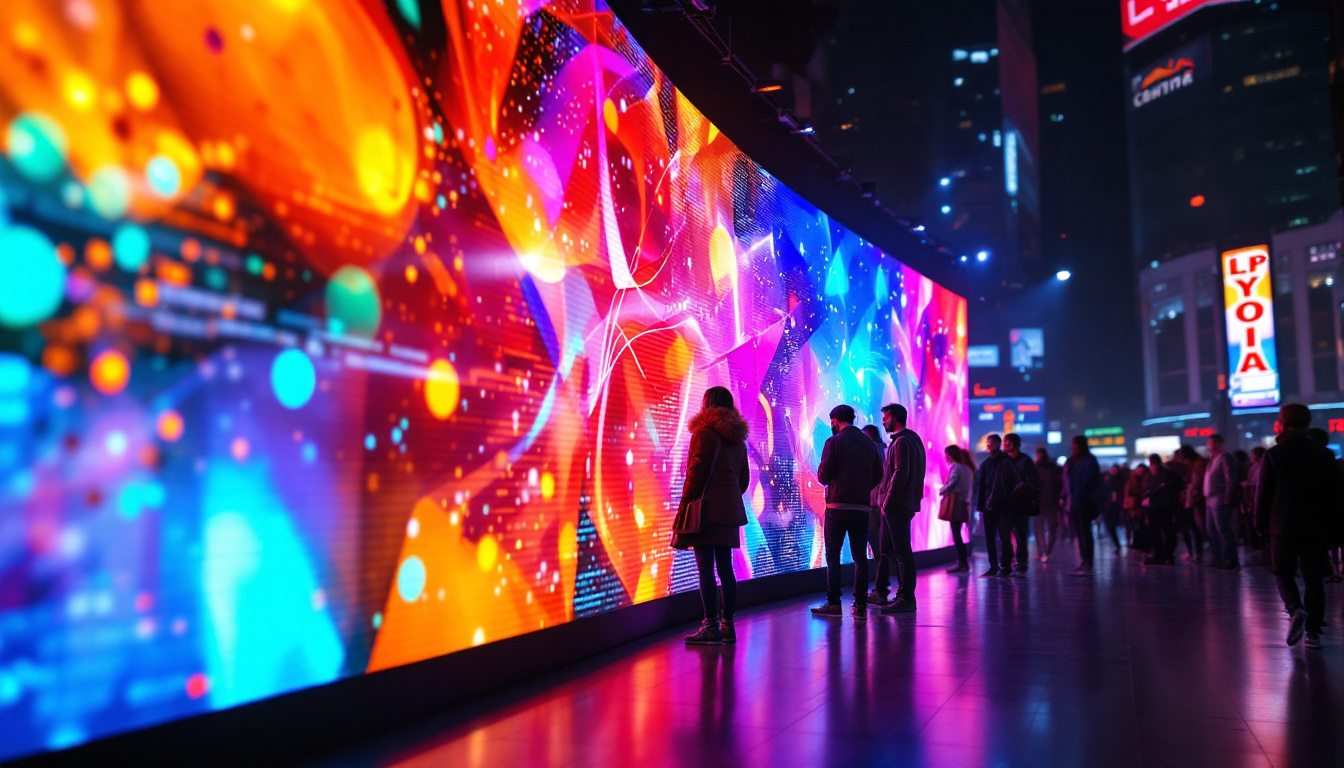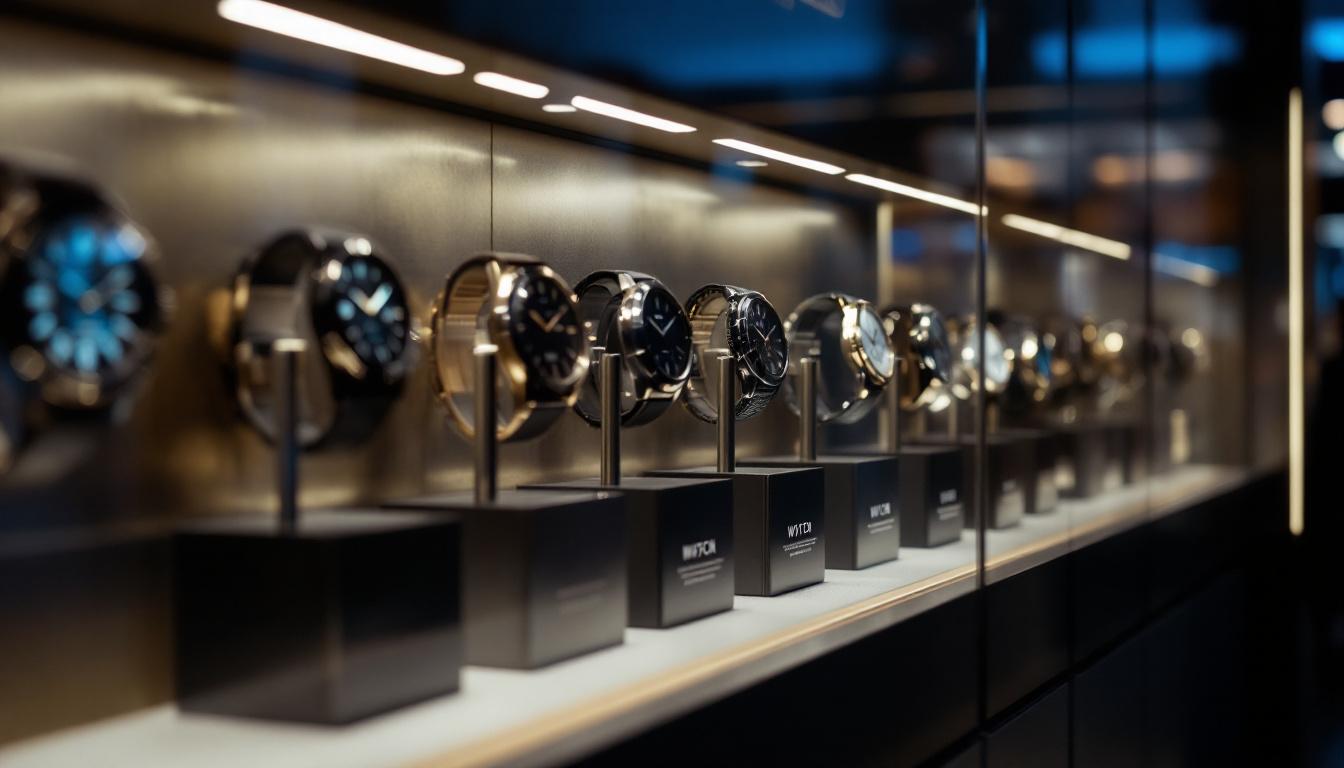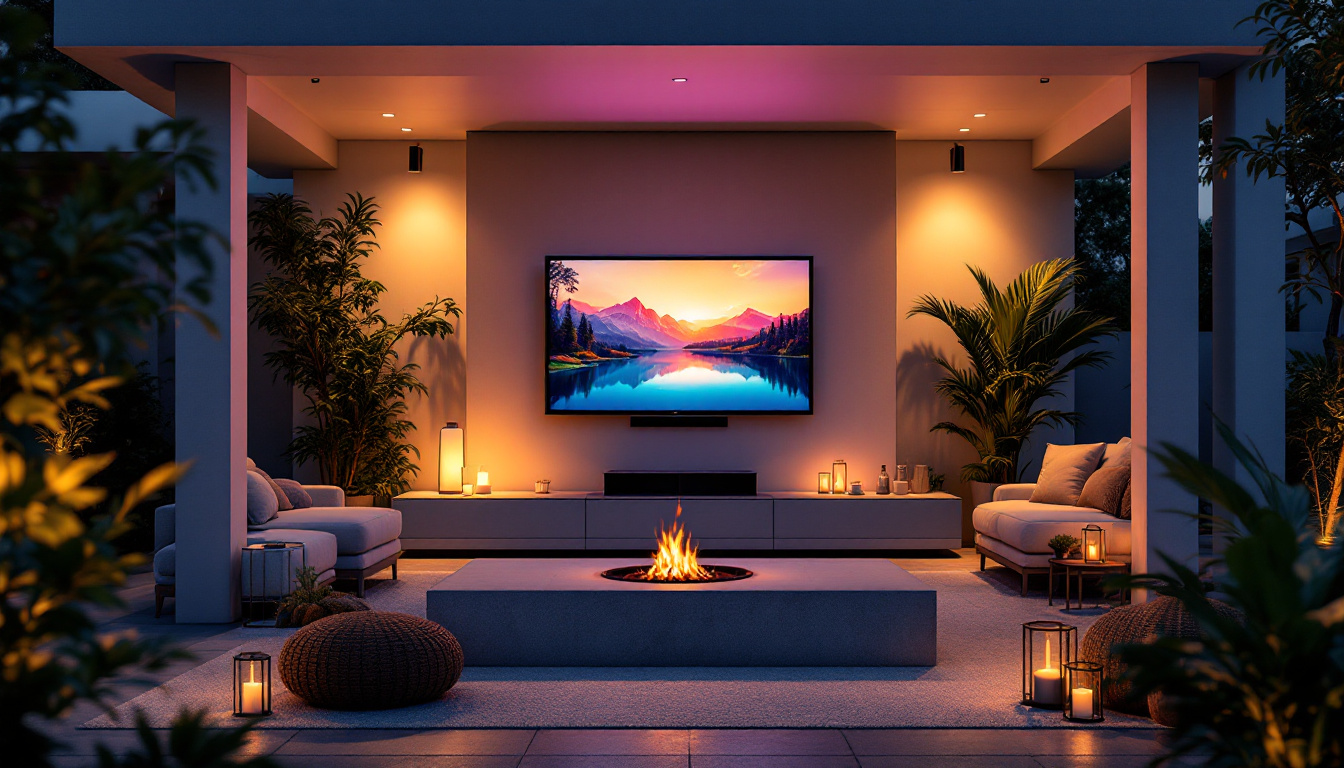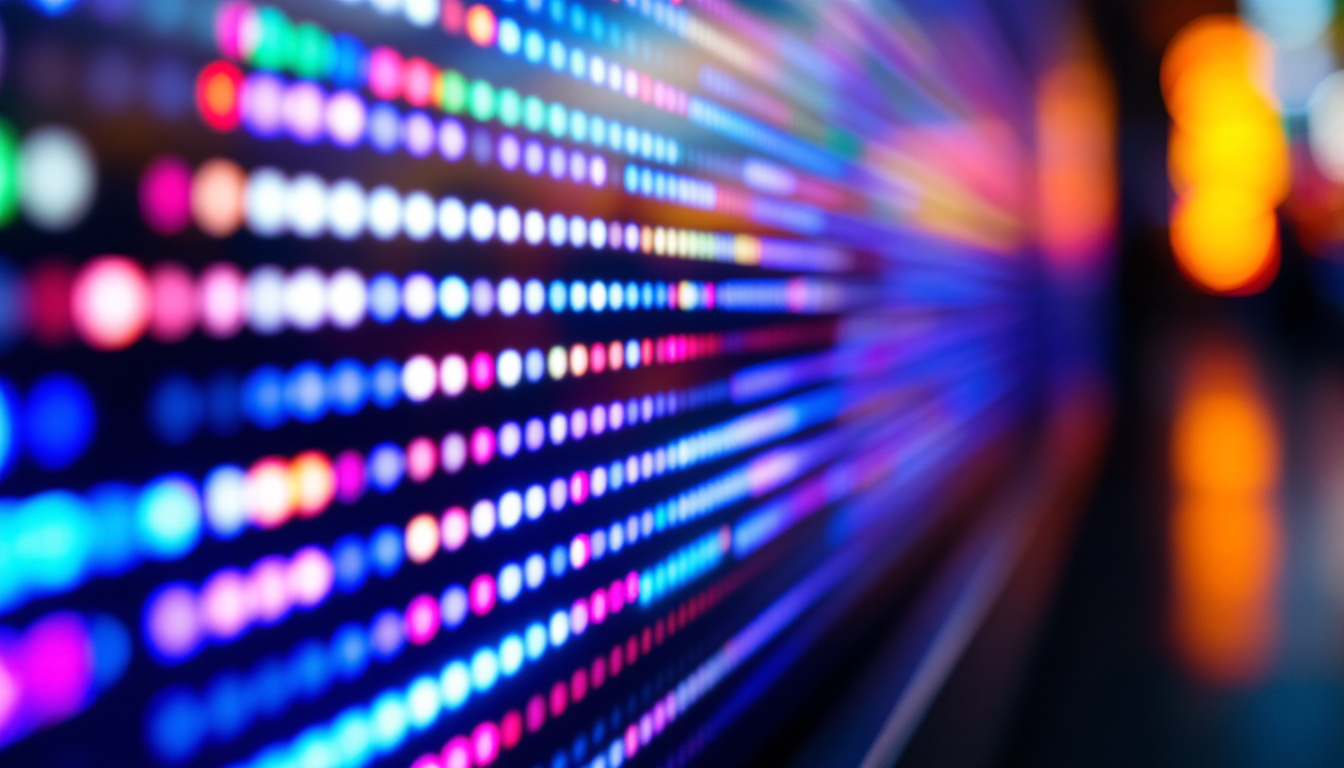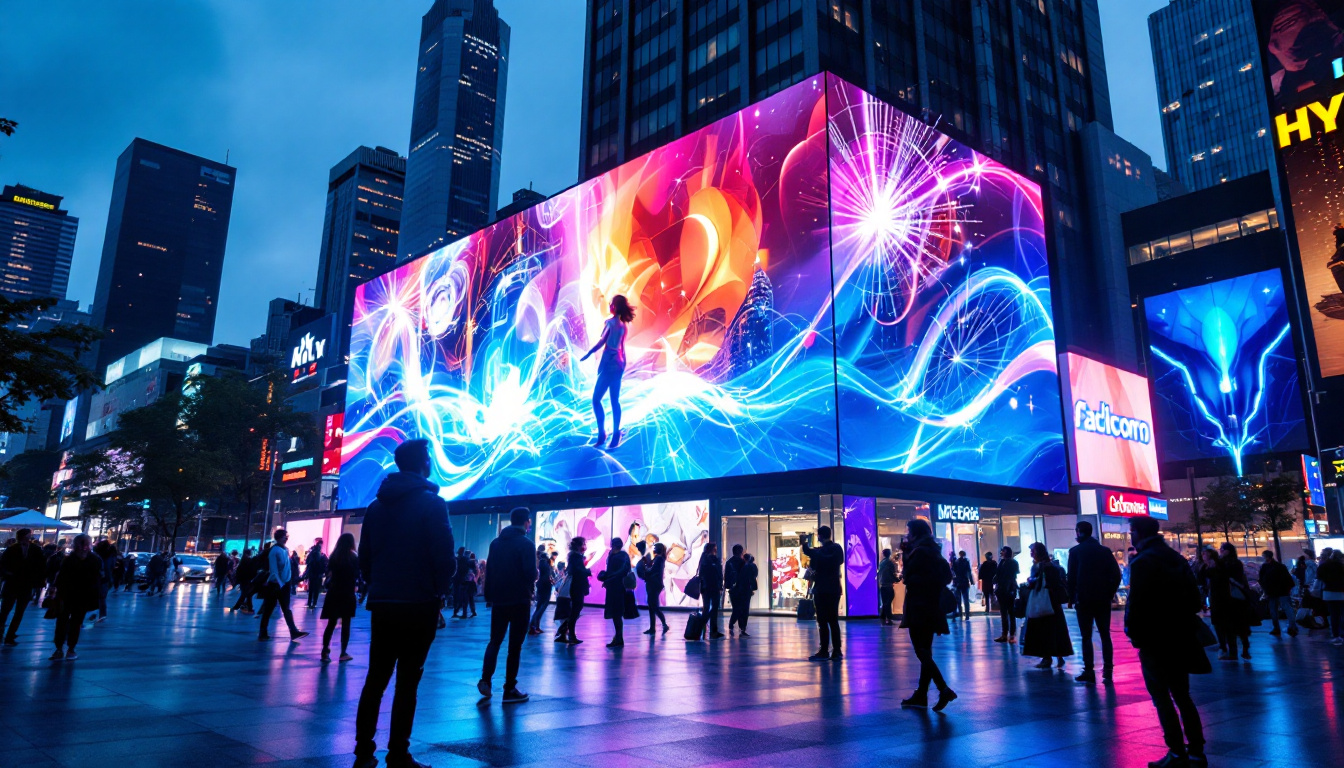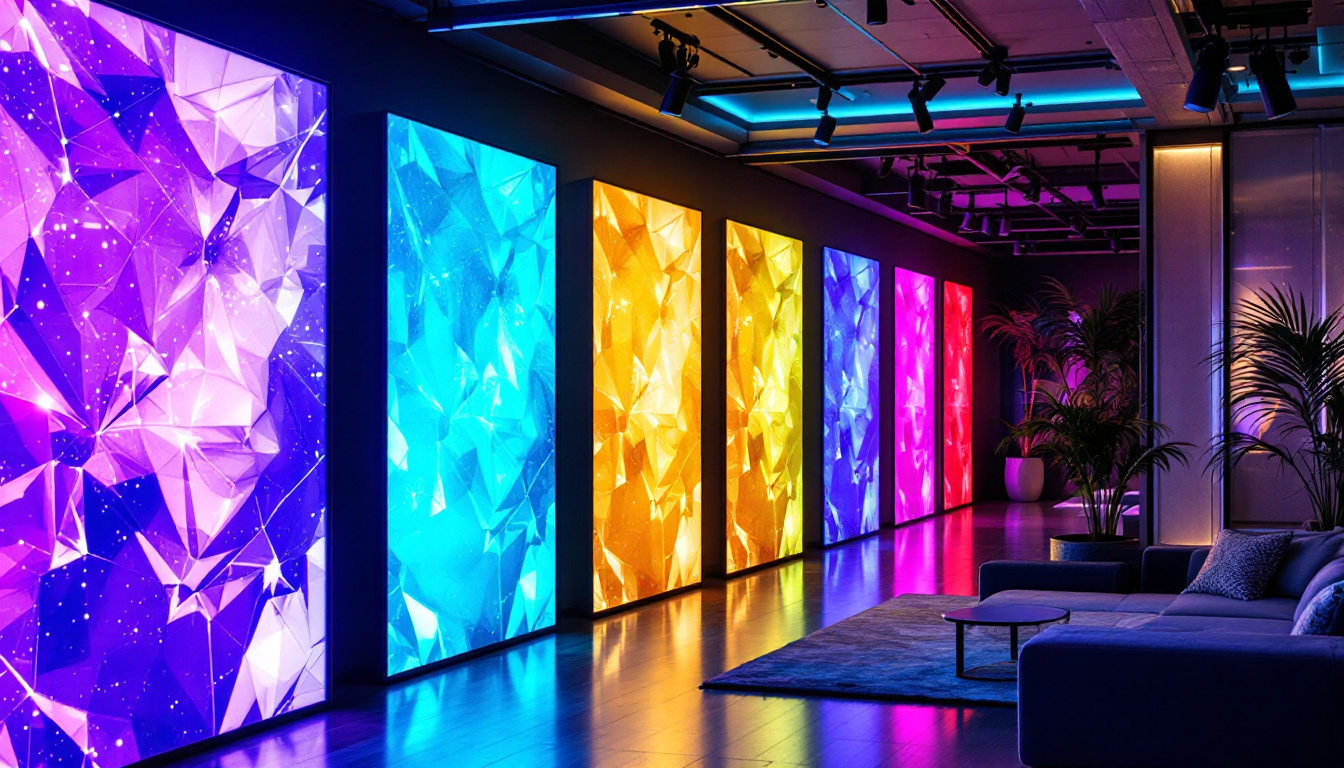In the world of advertising and information dissemination, LED billboard screens have revolutionized the way messages are conveyed to the public. These vibrant displays not only capture attention but also provide a dynamic platform for engaging content. This article delves into the intricacies of LED displays, their technology, applications, and the future of billboard advertising.
Understanding LED Technology
Light Emitting Diodes (LEDs) are semiconductor devices that emit light when an electric current passes through them. This technology has been at the forefront of display innovations, particularly in outdoor advertising. The efficiency, brightness, and longevity of LED lights make them an ideal choice for billboard applications.
How LEDs Work
At the core of LED technology is the principle of electroluminescence. When electrons recombine with holes within the device, energy is released in the form of photons, producing visible light. The color of the light emitted depends on the materials used in the semiconductor. By combining different colors, a full spectrum of hues can be achieved, allowing for vibrant and eye-catching displays.
LEDs are categorized into two main types: individual LEDs and LED modules. Individual LEDs are often used in smaller displays, while LED modules are pre-packaged units that can be combined to create larger screens. This modularity allows for flexibility in design and installation, making it easier to create custom billboard sizes and shapes. Furthermore, advancements in technology have led to the development of flexible LED displays, which can be bent and shaped to fit unconventional surfaces, expanding the creative possibilities for advertisers.
Advantages of LED Displays
LED displays offer numerous advantages over traditional billboard technologies, such as printed posters or neon signs. One of the most notable benefits is their brightness. LED screens can be seen clearly even in direct sunlight, making them ideal for outdoor advertising.
Additionally, LED displays are energy-efficient, consuming less power than older technologies. This not only reduces operational costs but also minimizes environmental impact. The longevity of LEDs, often exceeding 100,000 hours, means less frequent replacements and lower maintenance costs. Moreover, the ability to program LED displays for dynamic content allows advertisers to change messages quickly and easily, enabling real-time updates and targeted advertising strategies that can adapt to different audiences or events. This level of interactivity and responsiveness is a game-changer in the advertising landscape, allowing brands to engage consumers in ways that static displays simply cannot.
Applications of LED Billboards
LED billboards have found a wide range of applications across various industries. From advertising to public information, their versatility makes them a valuable asset in urban environments.
Advertising and Marketing
One of the primary uses of LED billboards is in advertising. Brands leverage these dynamic displays to showcase their products and services in a visually appealing manner. The ability to change content frequently allows advertisers to tailor their messages based on time, audience, and location.
Moreover, LED billboards can display video content, animations, and real-time updates, making them more engaging than static advertisements. This capability has led to increased viewer retention and higher conversion rates for businesses. The interactive nature of these displays also allows for integration with social media campaigns, where audiences can engage with the content by sharing their experiences or participating in live polls, further enhancing brand visibility and interaction.
Public Information and Safety
Beyond advertising, LED displays serve critical roles in public information dissemination. Cities utilize LED billboards to display traffic updates, weather alerts, and emergency notifications. This real-time information can be crucial for public safety and efficient urban management.
For instance, during severe weather conditions, LED billboards can provide timely warnings to drivers, helping to prevent accidents and ensure safety on the roads. This functionality exemplifies how technology can enhance community well-being. Additionally, these displays can be programmed to show important civic messages, such as reminders for local elections or public health campaigns, thus fostering a more informed and engaged citizenry.
Event Promotion
LED billboards are also instrumental in promoting events, concerts, and festivals. Event organizers can use these displays to generate excitement and inform potential attendees about schedules, ticketing, and special guests.
With the ability to showcase high-quality visuals and animations, LED billboards can create a buzz that traditional advertising methods may not achieve. This has made them a staple in event marketing strategies. Furthermore, the strategic placement of these billboards in high-traffic areas ensures maximum visibility, allowing event organizers to reach a broader audience. Collaborations with local businesses can also enhance promotional efforts, as they can feature joint advertisements that benefit both parties while creating a sense of community around the event.
Design and Content Considerations
Creating effective content for LED billboards requires careful consideration of design principles and audience engagement strategies. The dynamic nature of these displays allows for creativity, but it also necessitates clarity and impact.
Visual Design Principles
When designing content for LED displays, simplicity is key. Given the fast-paced environment in which billboards operate, messages must be easily digestible at a glance. Using bold colors, large fonts, and high-contrast visuals can help ensure that the message stands out.
Animations and transitions can enhance engagement but should be used sparingly to avoid overwhelming the viewer. The goal is to create a balance between visual appeal and message clarity, ensuring that the audience can quickly understand the information presented. Furthermore, the use of imagery that resonates with the local culture or current events can create a deeper connection with the audience, making the message not only memorable but also relevant to their daily lives.
Content Strategy
Effective content strategy for LED billboards involves understanding the target audience and the context in which the display is viewed. Timing is crucial; for instance, advertisements for coffee shops may be more effective in the morning, while dinner specials should be highlighted in the evening.
Additionally, incorporating real-time data, such as social media feeds or live updates, can create a sense of urgency and relevance, further engaging viewers. This interactive approach can significantly enhance the effectiveness of billboard advertising. Moreover, leveraging seasonal themes or local events can amplify the impact of the content, as audiences are often more receptive to messages that align with their current experiences or celebrations. For example, promoting a summer sale during a local festival not only draws attention but also encourages community involvement, making the billboard a part of the local narrative.
Challenges and Considerations
While LED billboards offer numerous advantages, there are also challenges and considerations that stakeholders must address. Understanding these factors is essential for maximizing the effectiveness of LED displays.
Regulatory Compliance
One of the primary challenges associated with LED billboards is navigating local regulations and zoning laws. Many municipalities have specific guidelines regarding the brightness, size, and content of digital displays to minimize distractions for drivers and maintain aesthetic standards.
Advertisers and billboard operators must ensure compliance with these regulations to avoid fines or forced removal of displays. Engaging with local authorities during the planning phase can help mitigate potential issues and streamline the approval process. Moreover, staying informed about any changes in legislation is crucial, as regulations can evolve in response to community feedback or technological advancements. This proactive approach not only fosters good relationships with local governments but also enhances the credibility of the advertising campaigns.
Technological Limitations
Despite their many benefits, LED technology is not without limitations. For instance, the initial investment for high-quality LED displays can be significant. While the long-term savings on maintenance and energy costs can offset this, smaller businesses may find it challenging to justify the upfront expenditure.
Additionally, LED displays require regular maintenance to ensure optimal performance. Dust, weather conditions, and other environmental factors can affect the longevity and clarity of the display. Implementing a routine maintenance schedule can help address these issues proactively. Furthermore, the rapid pace of technological advancements means that what is cutting-edge today may be outdated tomorrow. Keeping up with the latest innovations, such as improved pixel density or energy-efficient models, can be daunting but is essential for staying competitive in the advertising landscape. This necessitates a commitment to continuous learning and adaptation from billboard operators, ensuring that their displays not only meet current standards but also anticipate future trends in digital advertising.
The Future of LED Billboards
The future of LED billboards appears bright, with ongoing advancements in technology and design. As innovations continue to emerge, the capabilities and applications of these displays are expected to expand further.
Technological Innovations
Emerging technologies, such as artificial intelligence and machine learning, are poised to enhance the functionality of LED billboards. These advancements could enable more personalized advertising, with displays capable of analyzing audience demographics and preferences in real-time.
Furthermore, developments in flexible and transparent LED technology may lead to new design possibilities, allowing for more creative installations that blend seamlessly into urban environments. This could redefine how billboards are integrated into cityscapes.
Sustainability Initiatives
As environmental concerns continue to rise, the advertising industry is increasingly focused on sustainability. Future LED billboards may incorporate solar panels or other renewable energy sources to reduce their carbon footprint. Additionally, advancements in recycling technologies for LED components could further enhance their eco-friendliness.
By adopting sustainable practices, the industry can not only reduce its environmental impact but also appeal to a growing demographic of eco-conscious consumers.
Conclusion
LED billboard screens have transformed the landscape of advertising and information dissemination. Their vibrant displays, coupled with the ability to change content dynamically, make them a powerful tool for engaging audiences. However, the successful implementation of LED technology requires careful consideration of design, content strategy, and regulatory compliance.
As technology continues to evolve, the future of LED billboards promises exciting innovations and sustainable practices that will further enhance their impact. Embracing these developments will ensure that LED displays remain at the forefront of advertising and public communication for years to come.
Illuminate Your Message with LumenMatrix
Ready to elevate your advertising and captivate your audience with unparalleled clarity? Discover the innovative world of LumenMatrix LED display solutions. From the bustling streets to the heart of your next event, our extensive range of products, including Indoor and Outdoor LED Wall Displays, Vehicle LED Displays, and more, are designed to bring your vision to life. Embrace the future of visual communication with LumenMatrix and transform how your brand connects with the world. Check out LumenMatrix LED Display Solutions and start creating unforgettable visual experiences today.

